Abstract
The temperature of chilled foods is an important variable for the shelf life of a product in a production and distribution chain. To predict the number of organisms as a function of temperature and time, it is essential to model the growth as a function of temperature. The temperature is often not constant in various stages of distribution. The objective of this research was to determine the effect of shifts in temperature. The suitability and usefulness of several models to describe the growth of Lactobacillus plantarum with fluctuating temperatures was evaluated. It can be assumed that temperature shifts within the lag phase can be handled by adding relative parts of the lag time to be completed and that temperature shifts within the exponential phase result in no lag phase. With these assumptions, the kinetic behavior of temperature shift experiments was reasonably well predicted, and this hypothesis was accepted statistically in 73% of the cases. Only shifts of temperature around the minimum temperature for growth showed very large deviations from the model prediction. The best results were obtained with the assumption that a temperature shift (within the lag phase as well as within the exponential phase) results in an additional lag phase. This hypothesis was accepted statistically in 93% of the cases. The length of the additional lag phase is one-fourth of the lag time normally found at the temperature after the shift.
Full text
PDF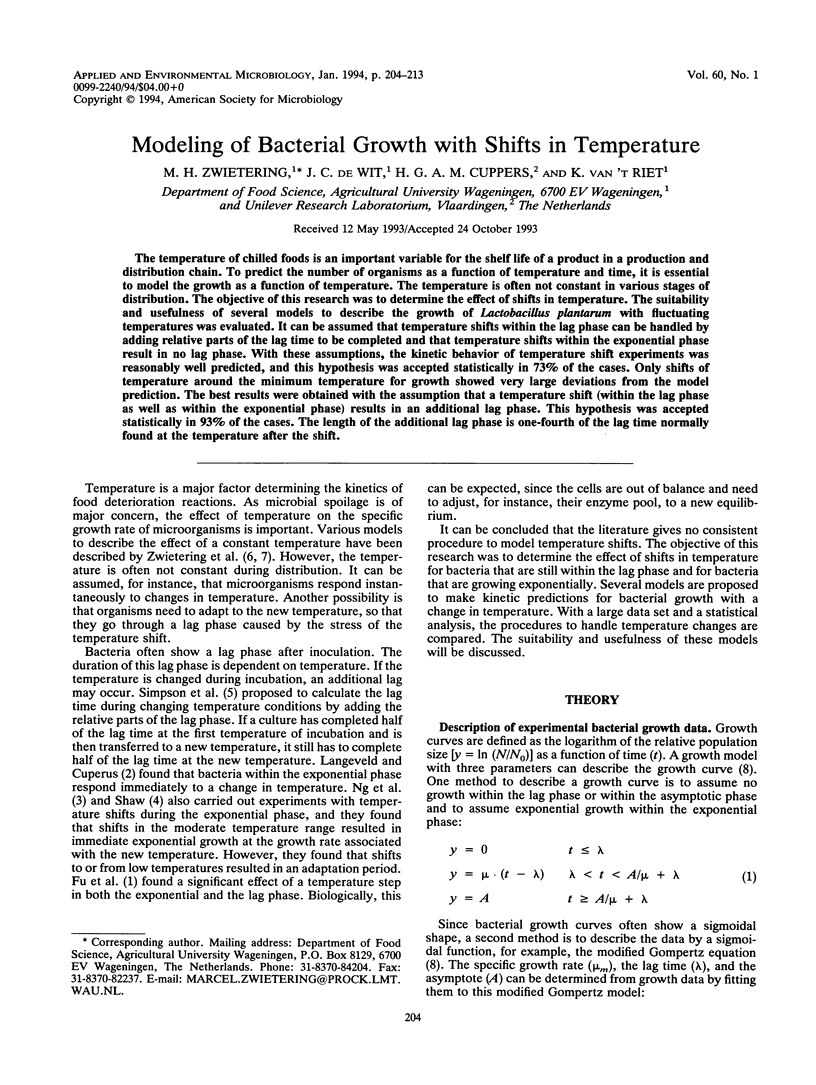
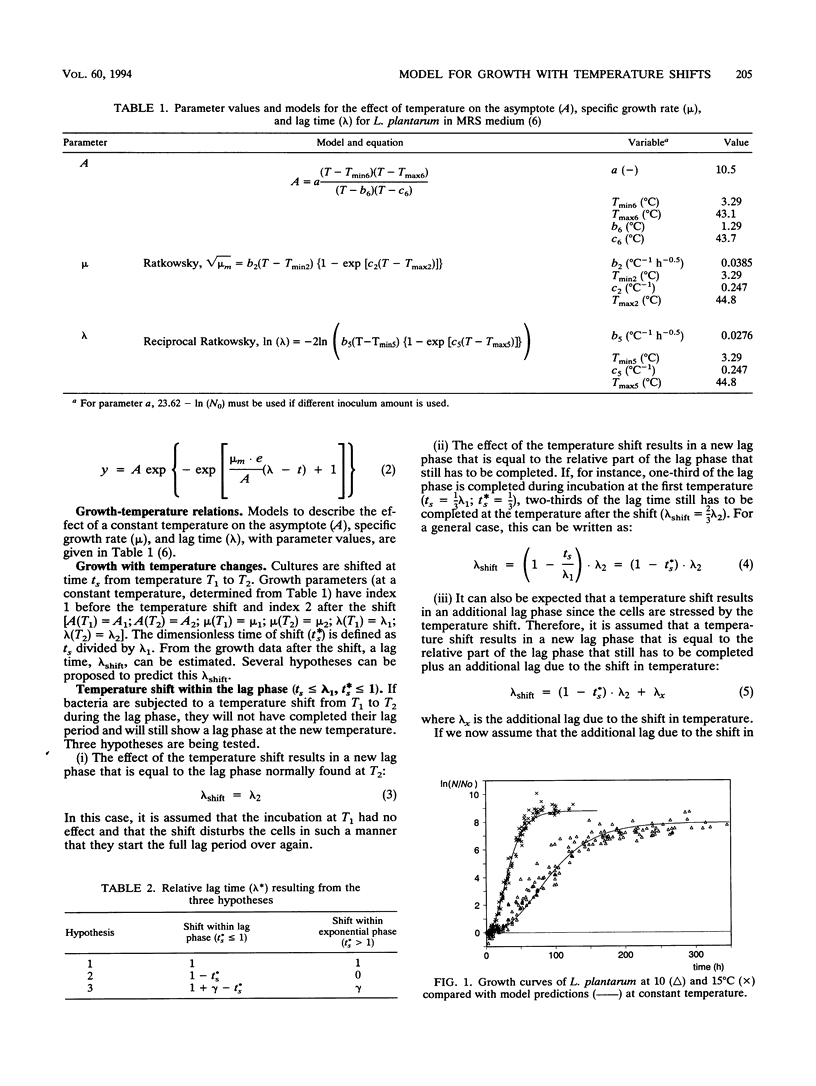
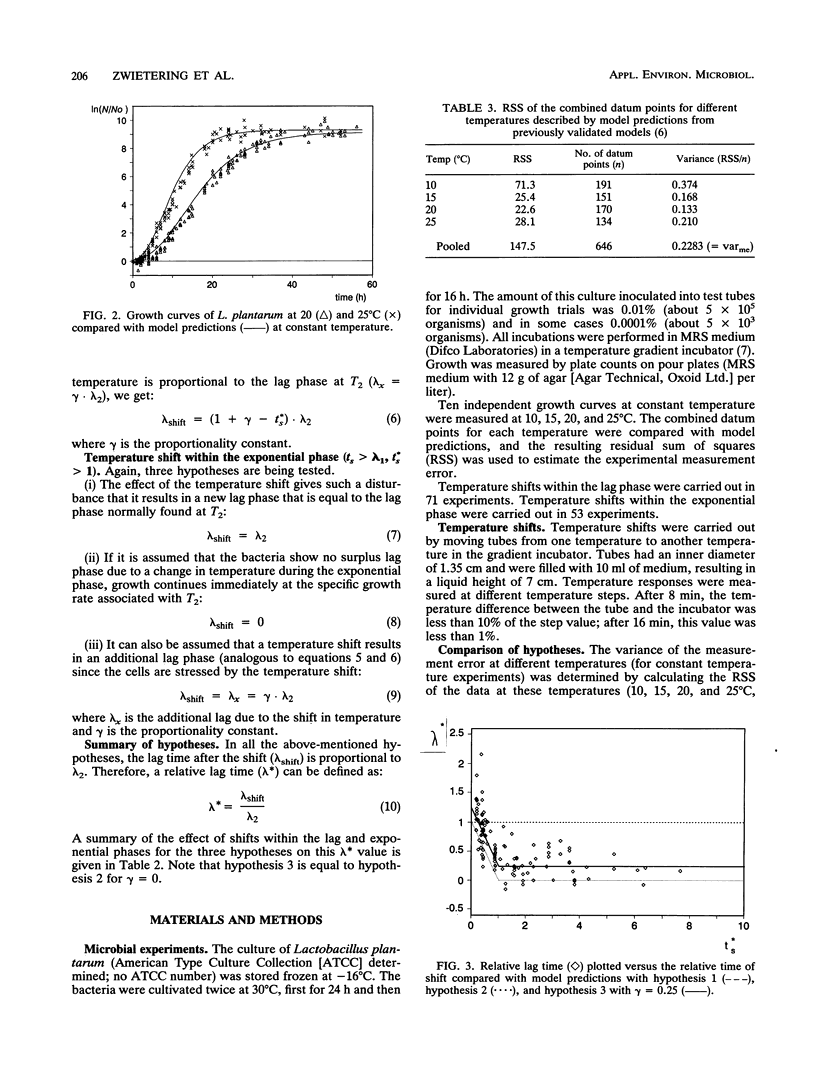
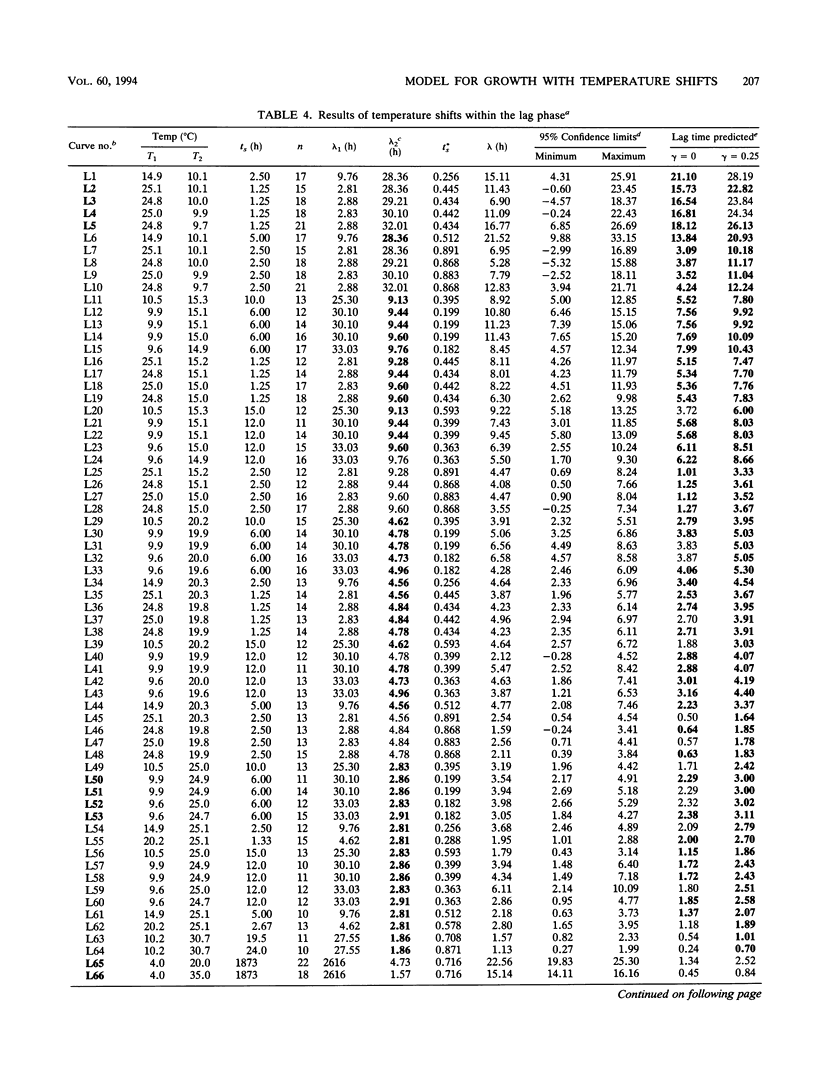
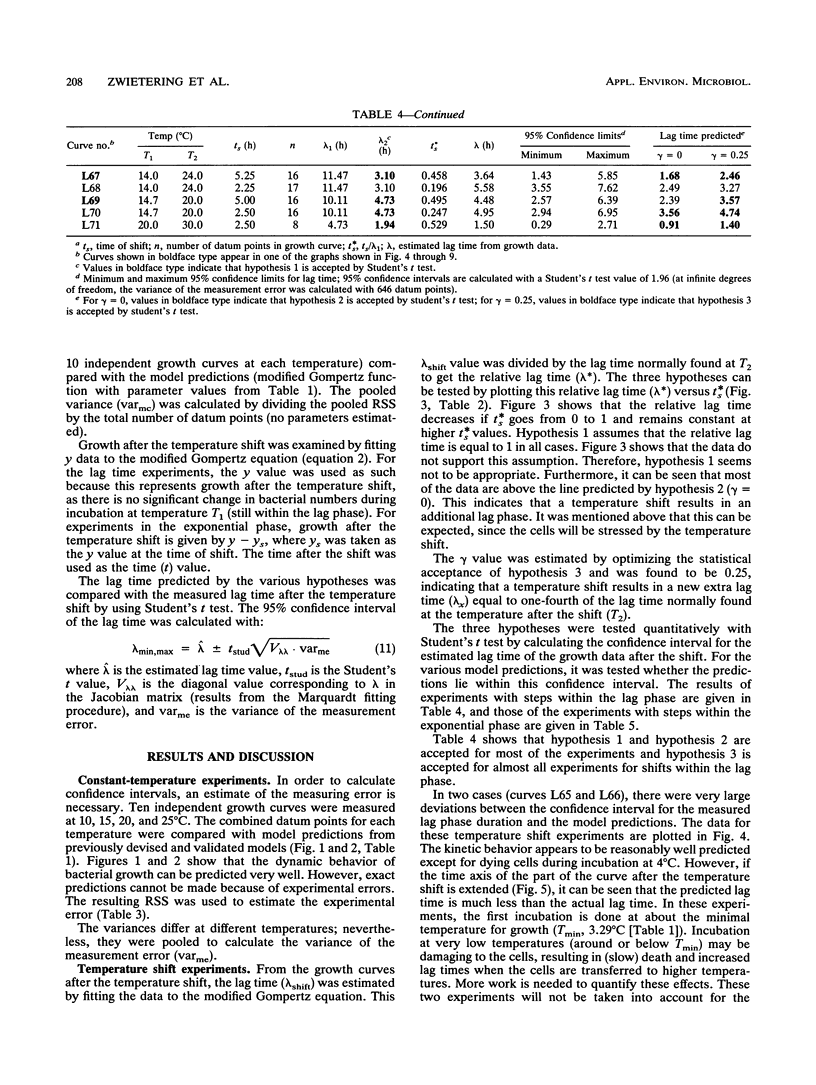
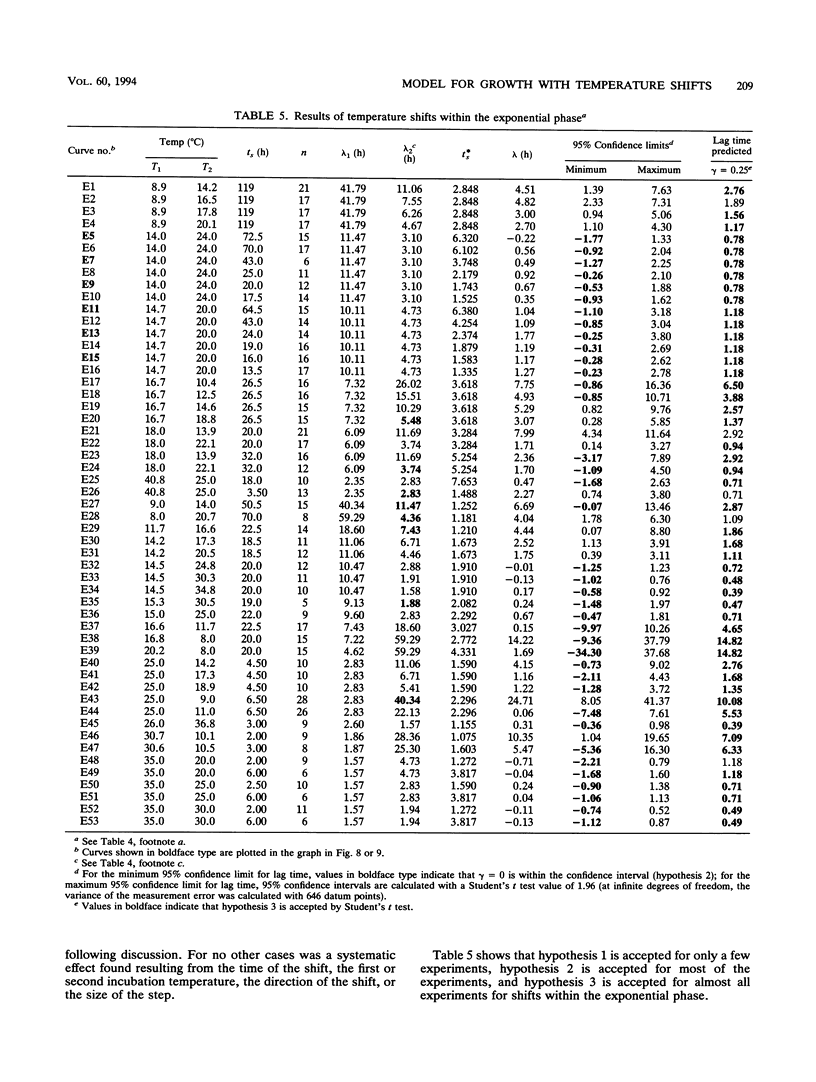
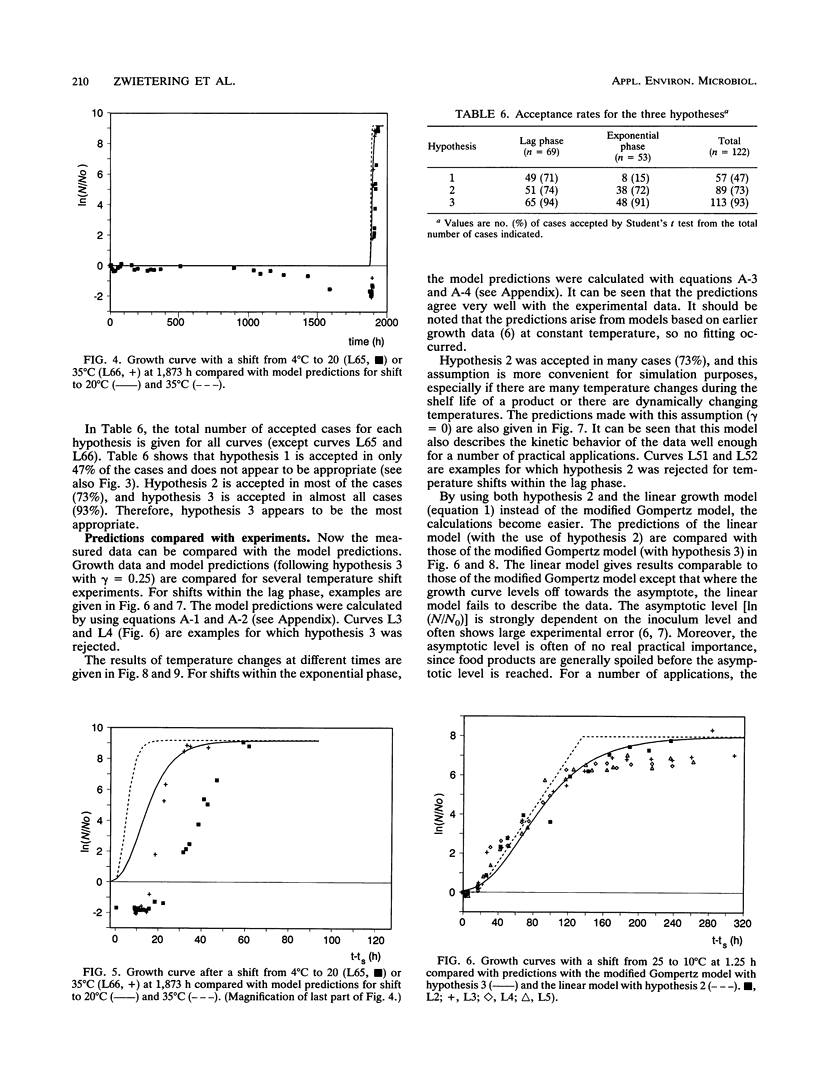
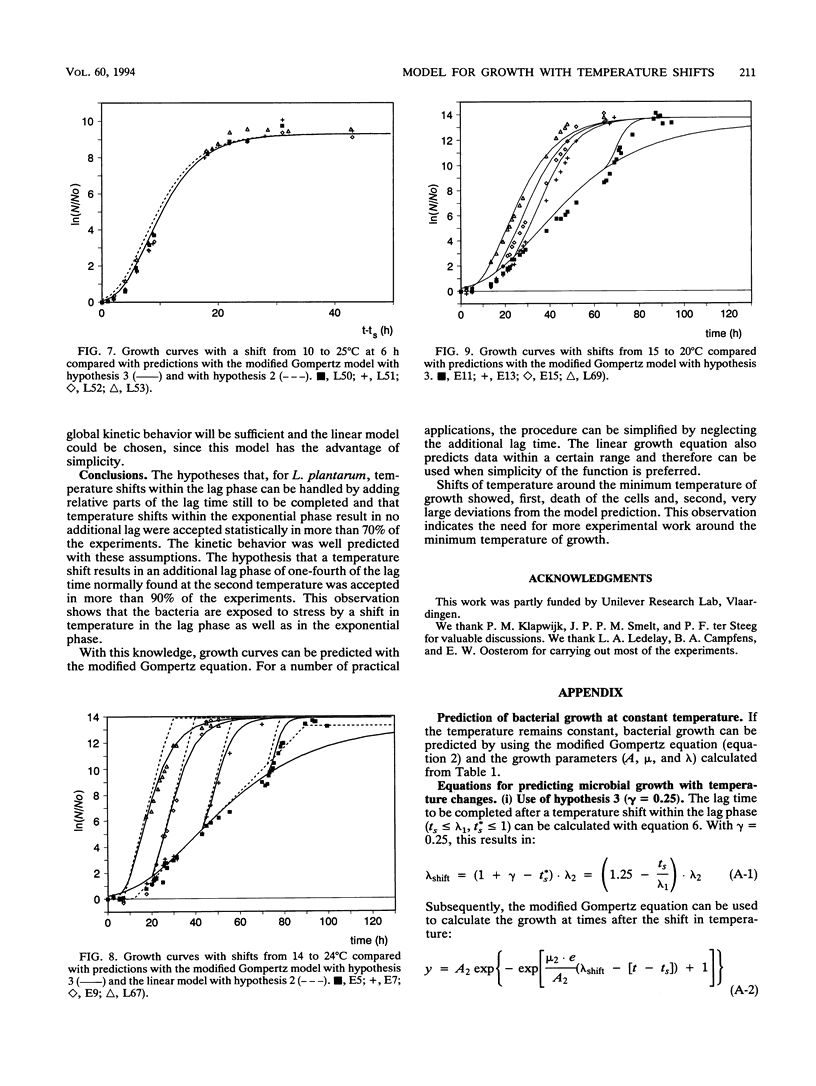
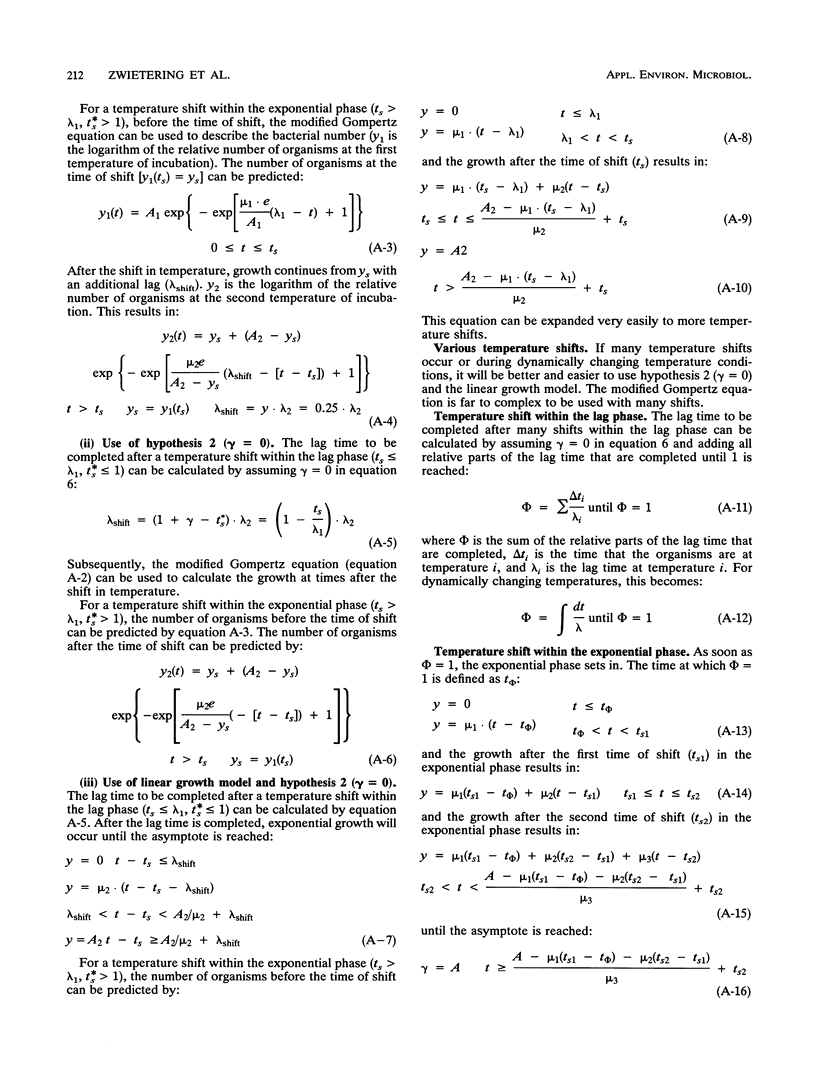
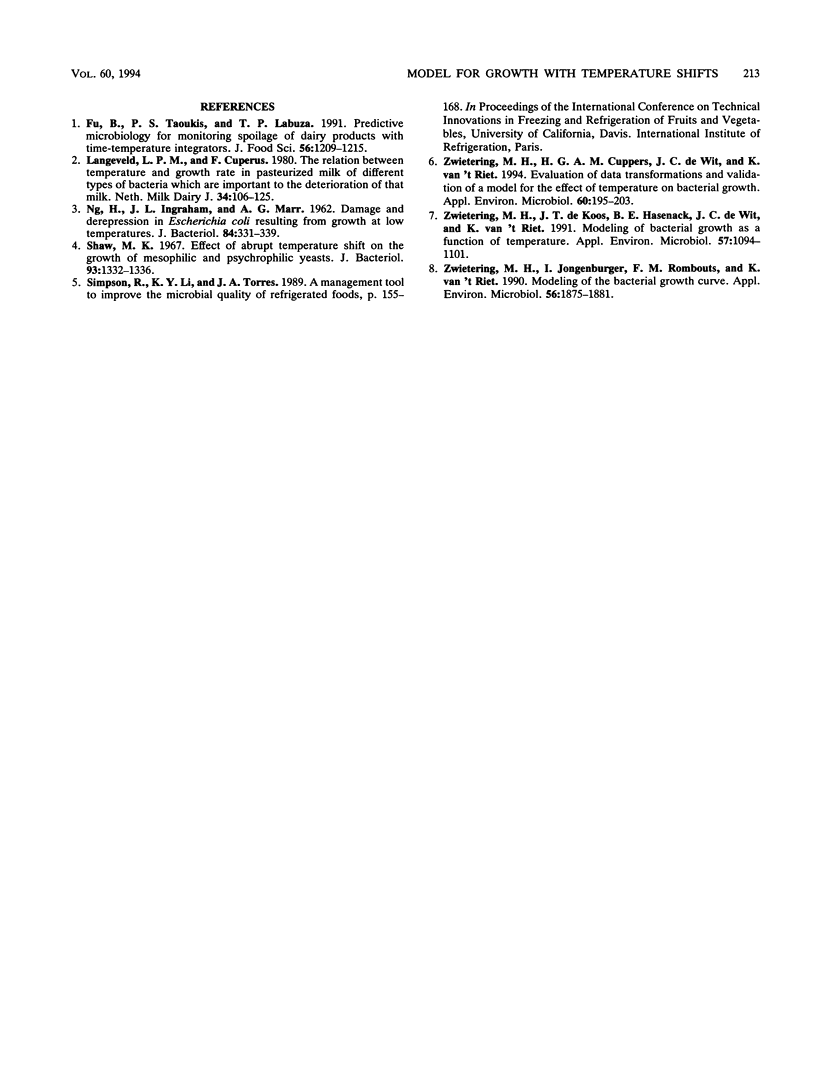
Selected References
These references are in PubMed. This may not be the complete list of references from this article.
- NG H., INGRAHAM J. L., MARR A. G. Damage and derepression in Escherichia coli resulting from growth at low temperatures. J Bacteriol. 1962 Aug;84:331–339. doi: 10.1128/jb.84.2.331-339.1962. [DOI] [PMC free article] [PubMed] [Google Scholar]
- Shaw M. K. Effect of abrupt temperature shift on the growth of mesophilic and psychrophilic yeasts. J Bacteriol. 1967 Apr;93(4):1332–1336. doi: 10.1128/jb.93.4.1332-1336.1967. [DOI] [PMC free article] [PubMed] [Google Scholar]
- Zwietering M. H., Cuppers H. G., de Wit J. C., van 't Riet K. Evaluation of data transformations and validation of a model for the effect of temperature on bacterial growth. Appl Environ Microbiol. 1994 Jan;60(1):195–203. doi: 10.1128/aem.60.1.195-203.1994. [DOI] [PMC free article] [PubMed] [Google Scholar]
- Zwietering M. H., Jongenburger I., Rombouts F. M., van 't Riet K. Modeling of the bacterial growth curve. Appl Environ Microbiol. 1990 Jun;56(6):1875–1881. doi: 10.1128/aem.56.6.1875-1881.1990. [DOI] [PMC free article] [PubMed] [Google Scholar]
- Zwietering M. H., de Koos J. T., Hasenack B. E., de Witt J. C., van't Riet K. Modeling of bacterial growth as a function of temperature. Appl Environ Microbiol. 1991 Apr;57(4):1094–1101. doi: 10.1128/aem.57.4.1094-1101.1991. [DOI] [PMC free article] [PubMed] [Google Scholar]


